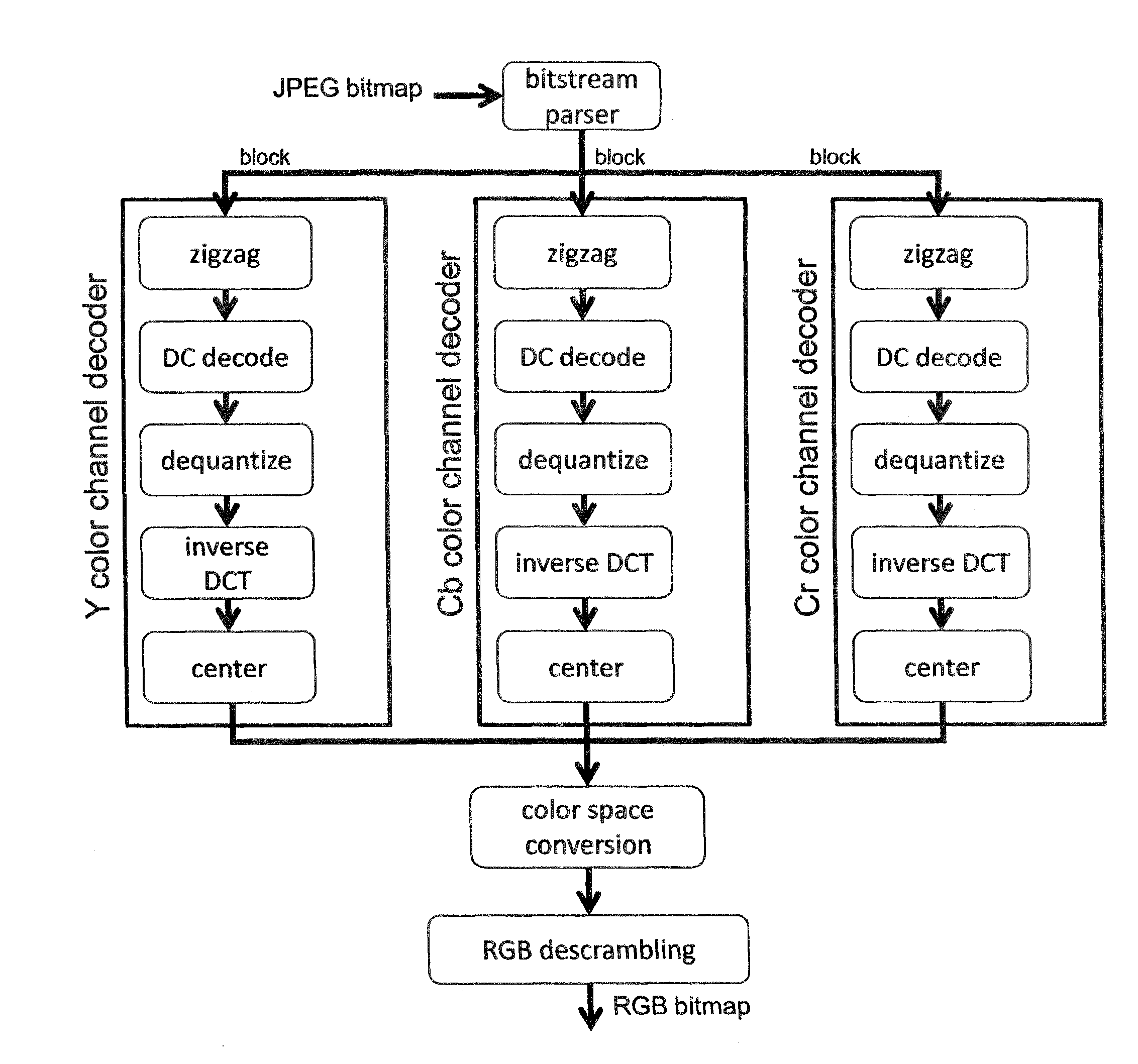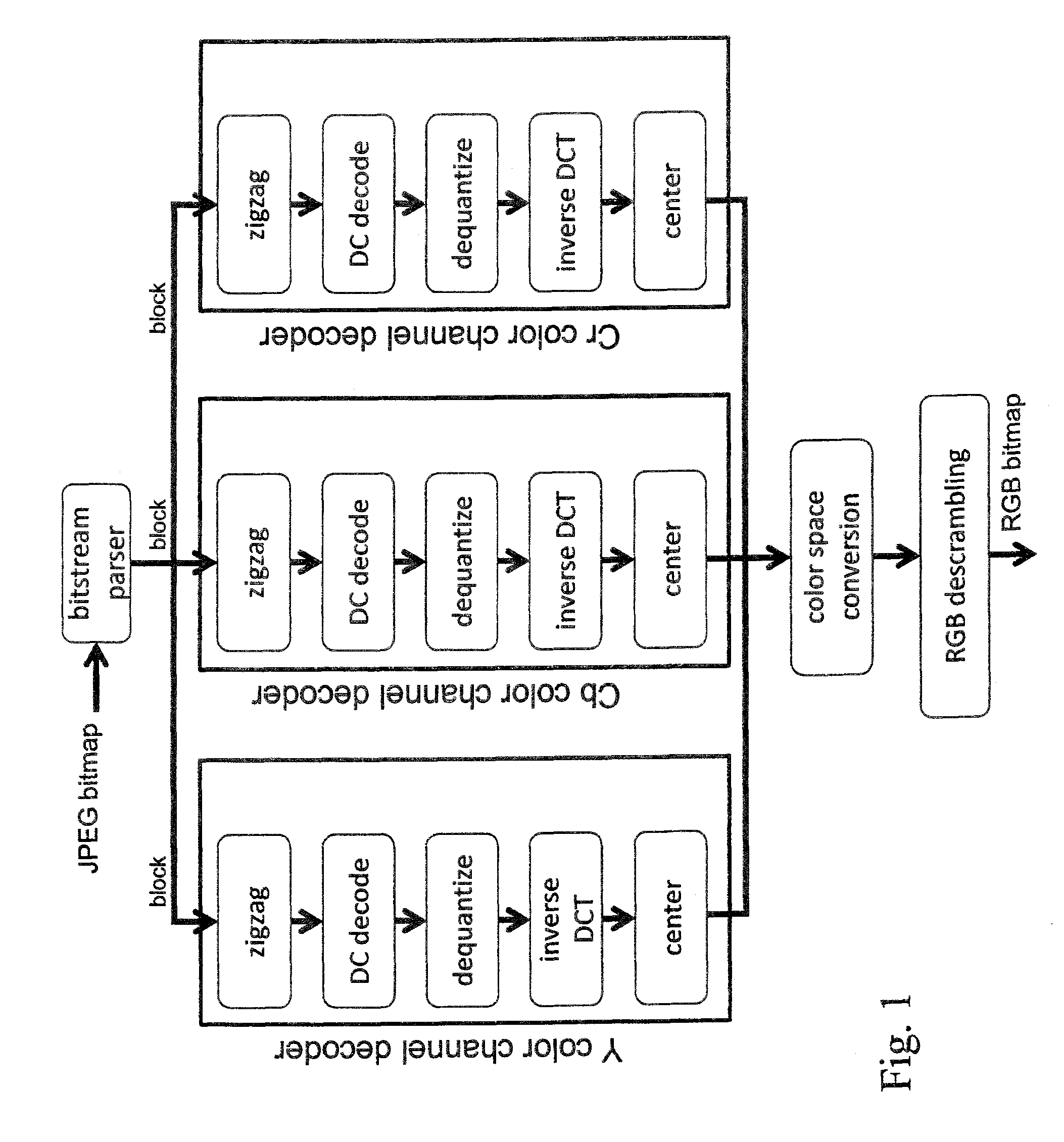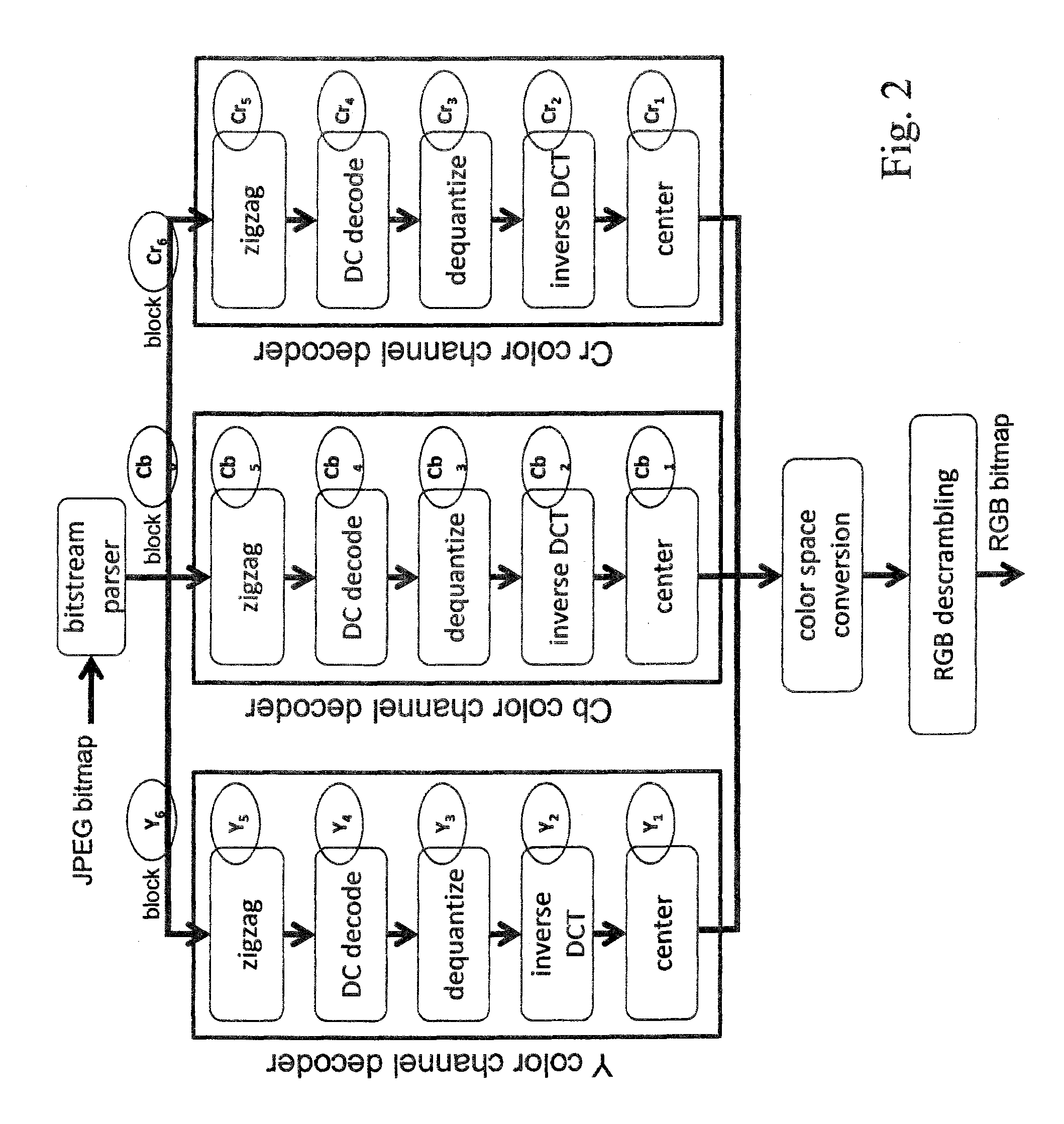Extraction of functional semantics and isolated dataflow from imperative object oriented languages
a functional semantic and dataflow technology, applied in the field of parallel programming, can solve the problems of more difficult to determine what side-effects might occur, difficult or even impossible to express an entire application in a strictly functional style, and difficult or even impossible to express that portions of a program are intended to be side-effect fr
- Summary
- Abstract
- Description
- Claims
- Application Information
AI Technical Summary
Benefits of technology
Problems solved by technology
Method used
Image
Examples
example code 1
[0081]
1public final value class2unsigned> {3 private bit[[N]] data;4 public unsigned( ) {5 this.data = new bit[[N]];6 }7 public unsigned(bit[N] data) {8 this.data = new bit[[N]](data);9 }10 public unsigned this & unsigned that {11 var result = new bit[N];12 for (N i: N.first::N.last)13 result[i] = this.data[i]& that.data[i];14 return new unsigned(result);15 }16 ...17}18public typedef uint = unsigned>;
[0082]An unsigned number is defined as a fixed size array of bits, and each operation is then defined as a function on those bit arrays. Since much of the computation and parallelism available in hardware occurs at the bit-level, the methodology of the present disclosure may provide constructs for exposing such operations, and yet maintain a high level of abstraction. Thus the ability to compute at the bit-level is combined with the ability to define what in almost every other language are included as “primitive” types.
[0083]Some Observations about Value Type...
example code 2
Example of Local, Global, and Glocal Methods
[0112]
1public interface IRandom {2 global int nextInt( );3}4public class Random implements IRandom {5 public global int nextInt( ) {6 return (int) System.nanoTime( );7 }8}9public class PseudoRandom implements IRandom {10 int nextValue = 17;11 public local int nextInt( ) {12 nextValue = nextValue * 317 + 9;13 return nextValue;14 }15}16public final value class17 unsigned> {18 ...19 static glocal unsigned random(IRandom g) {20 return new unsigned(g.nextInt( ));21 }22}23public class BoundedMap, V> {24 protected final V[K] mapping = new V[K]( );25 ...26 public glocal boolean containsValue(V val) {27 for (K key)28 if (val.equals(mapping[key]))29 return true;30 return false;31 }32}33class Test {34 static final boolean repeatable = hasFoo( );35 static local boolean hasFoo( ) {36 var g = new PseudoRandom( );37 var u = unsigned.random(g);38 var map = new BoundedMap,39 unsign...
example code 3
Pseudocode for JPEG Decoder in an Imperative Programming Style
[0151]
1typedef pixel = unsigned;2typedef block = pixel[[64]];3public class Channel {4 static final Decode decode = new Decode( );5 private final Coefficient dc;6 public final Quantization q;7 public Channel(Color c) {8 dc = new Coefficient( );9 q = new Quantization(c);10 }11 public block decode(block mb) {12 return decode.center(13 Transforms.iDCT(14 q.deQuantize(15 dc.dcDecode(16 decode.zigzag(mb)))),17 128);18 }19}
[0152]However, the introduction of pipeline-parallelism in an imperative language is intrusive, requiring the incorporation of buffering stages between method-calls or the use of other schemes that ultimately obfuscate the original implementation. This in turn leads to rigid implementations that are difficult to modify or tune for performance. The language semantics in an imperative programming model ensure eager evaluation and the resultant code dictates a ...
PUM
 Login to View More
Login to View More Abstract
Description
Claims
Application Information
 Login to View More
Login to View More - R&D
- Intellectual Property
- Life Sciences
- Materials
- Tech Scout
- Unparalleled Data Quality
- Higher Quality Content
- 60% Fewer Hallucinations
Browse by: Latest US Patents, China's latest patents, Technical Efficacy Thesaurus, Application Domain, Technology Topic, Popular Technical Reports.
© 2025 PatSnap. All rights reserved.Legal|Privacy policy|Modern Slavery Act Transparency Statement|Sitemap|About US| Contact US: help@patsnap.com



